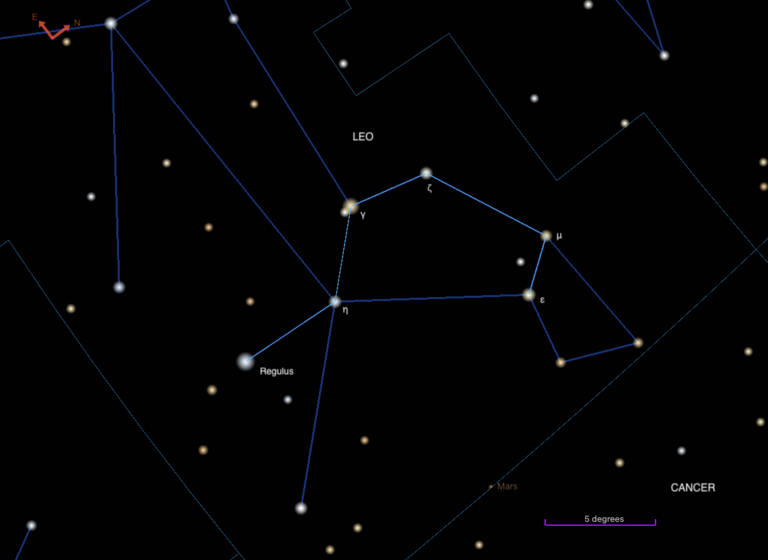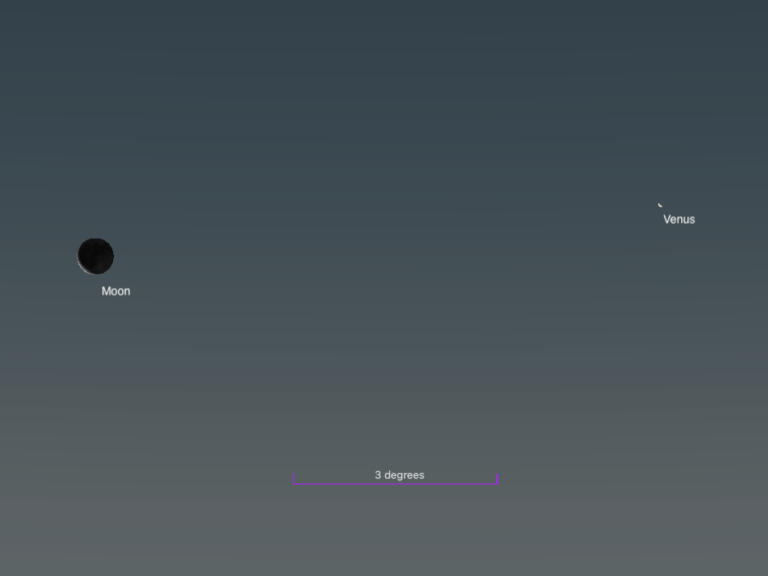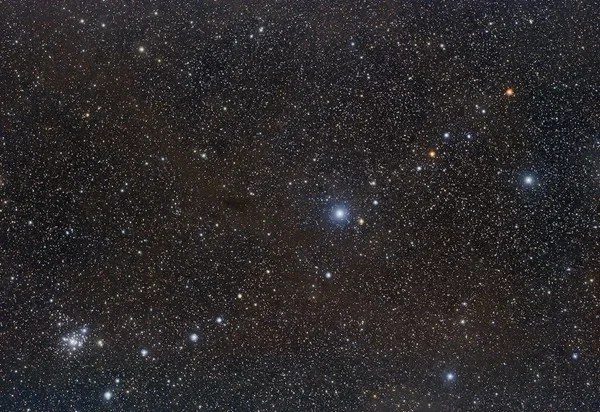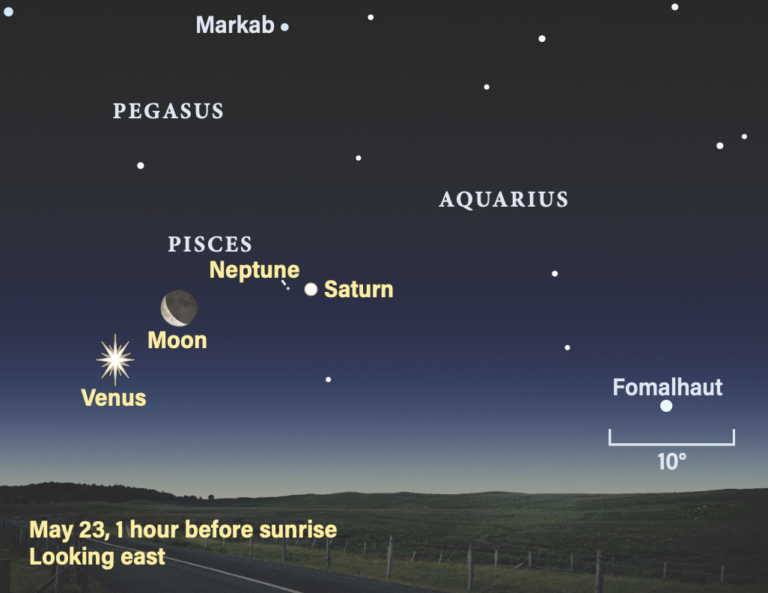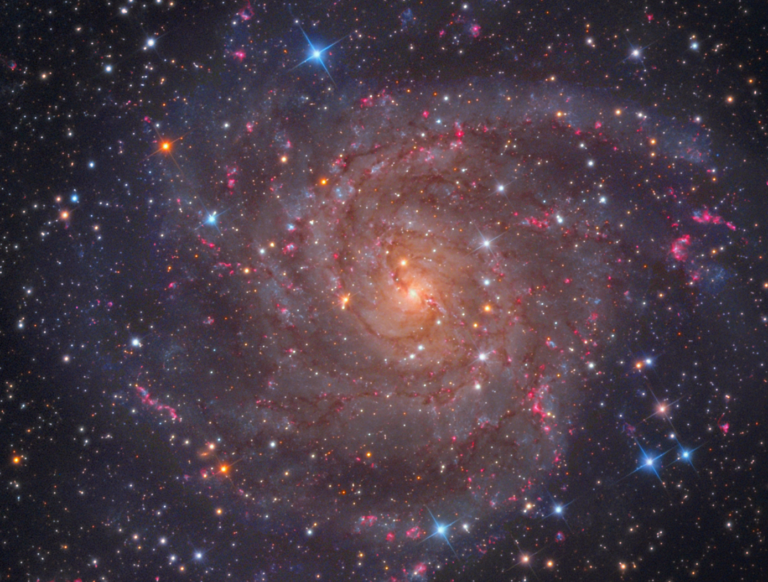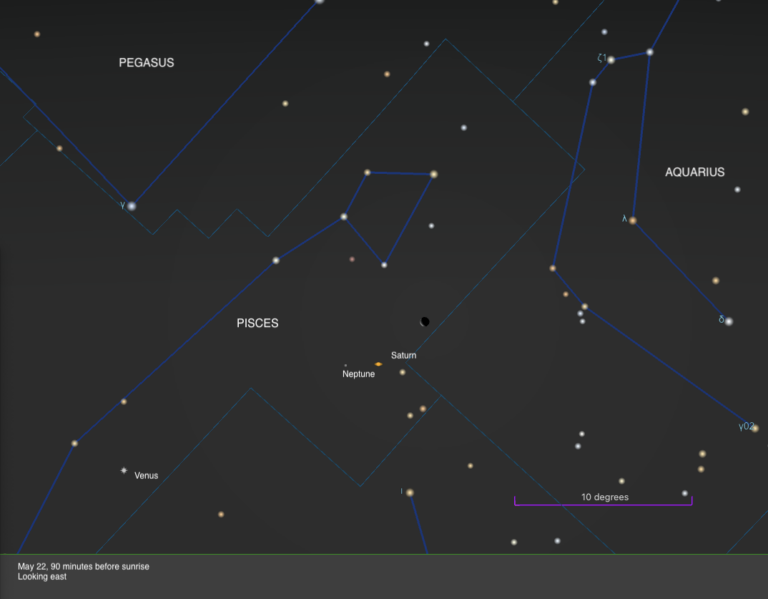OK, but this morning just as he brushed his teeth, some tree in Maine got blown over by a wind gust. Does he really see a connection between his toothpaste and that particular pine? Statistical methodology helps researchers deal realistically with such simultaneous events.
Still, coincidences are fun and fascinating. They’re also bothersome to scientists. Data become suspect when an anomaly appears. Case in point: the Andromeda Galaxy. That the nearest spiral galaxy is also the biggest and most luminous within 35 million light-years threw early investigators for a loop. We want our neighborhood to represent the universe, not be populated by oddballs. It initially made us doubt our measurements.
Or consider that we gaze into a sky with just two disks, the Sun and the Moon. They each take a month to spin. They both appear the same size. The Sun is 400 times farther away but 400 times larger. One neatly fits over the other to produce stunning solar totalities. Coincidence, right?
Our lives unfold just as true north is marked by the brightest of all the potentially well-aligned North Stars of the past 26,000 years. And the planets’ distances from the Sun form an easy mathematical relationship that has no physical basis beyond a mere numerological quirk. The curiosities go on and on.
Far more scientifically useful are the apparent coincidences, where actual causes are at play. Novices seem amazed that the Moon spins on its axis in the same 27.32166-day period in which it revolves around Earth, keeping its sole blotchy hemisphere pointed our way. But tidal stresses always slow a satellite’s rotation until it’s locked in place. Virtually all large moons keep just one side toward their planet.
THE MOON NEATLY FITS OVER THE SUN TO PRODUCE STUNNING SOLAR TOTALITIES. COINCIDENCE, RIGHT?
Sometimes it’s maddeningly difficult to separate coincidence from correspondence. Example: the 11-year sunspot period. The ebb and flow of powerful solar storms must do something to us. But we’re merely in cycle 24. Only two dozen sunspot cycles have been observed since the 18th century, against which we can hunt for thousands of potential matches involving everything from sociopolitical events to famines to earthquakes. Which are related, and which are merely the mischief wrought by the law of averages?
Checking back, we find that the solar cycle swings in harmony with the fashionable length of women’s skirts, the rabbit population of Australia, the party that controls the U.S. Congress, the position of the Gulf Stream, the thickness of Earth’s atmosphere, and many other phenomena. Astronomers now regard only the latter two as related to the Sun’s pulses. Yet we mustn’t stop seeking matchups. What looks like a coincidence may actually have a hidden cause that leads to discoveries of new celestial phenomena.
I keep finding little numerical coincidences. Like, the number of Earth-Sun distances (astronomical units) in a light-year (63,240) is virtually the same as the number of inches in a mile (63,360). So if you model the Sun as a dot, which would make Earth an invisible speck an inch away, the nearest star (4.2 light-years distant) is another dot 4.2 miles from the first.
Such matchups make it easier to memorize numerical tidbits. The number of seconds in a day (86,400) uses the same digits as the diameter of the Sun (864,000 miles). The half-life of carbon-14 (5,730 years) starts with Heinz’ “57” varieties. The Sun’s mass in grams is the same 10 followed by 33 zeros as its luminosity in ergs. One finds connections everywhere. Please tell me I’m not alone. I’d talk to my therapist about this if I had one.
Just as I wrote that, a good friend who’s a psychologist phoned. It was a coincidence.
Contact me about my strange universe by visiting http://skymanbob.com.


